- Home
- Cooking With Wood
- Wood Stove Cooking
Wood Stove Cooking
This post may contain affiliate links so I earn a commission.
Wood stove cooking has been around since the pioneer days when nearly every American home heated with firewood.
Although they were not the most efficient stoves when they first became popular, they served their purpose and fulfilled a need.
Now, many years later as propane, natural gas and electricity prices fluctuate, many homes still use firewood as their primary source of heat.
However, todays stoves are much different than the old “smoke dragons” of the past.
In the late 1980’s the EPA changed the standards on wood stoves making them much more efficient, burning less wood and producing fewer emissions.
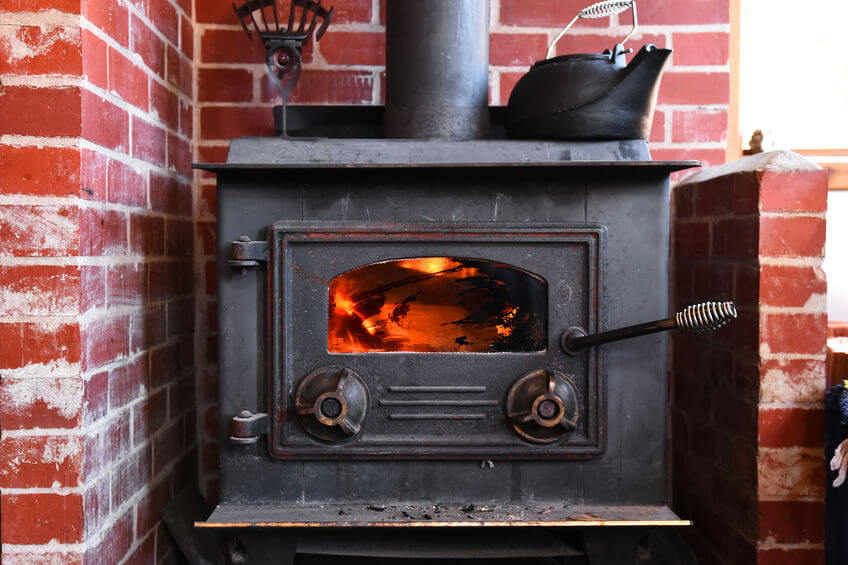
We all know wood stoves are a great place to gather and enjoy the warmth they provide, but did you know they can also be used to cook lunch, warm up last nights dinner, or create an amazing breakfast?
A wood stove can be used to cook any meal that you would normally cook over your electric or gas range.
Plus, cooking on a wood stove has a ton of other benefits!
For starters, you’re able to use the firewood you already have seasoned, and the fire you already have built to heat your home.
It also allows you to be prepared in case of an emergency.
Even if the power goes out you’re still able to cook and heat up food with a wood stove as opposed to an electric range which would be useless without power.
Finally, and the best reason of all….. it's fun!
How To Get Started With Wood Stove Cooking
Okay, so you are ready to start using your wood stove for more than just heating your home.
There are some key tips and tricks to keep in mind when cooking over a wood stove since it is not as easy and turning on a burner and setting it to medium heat and then just stirring your food occasionally.
What’s the best piece of advice I can give about cooking a meal on top of a wood stove?
Effective wood stove cooking may take a couple trials before you get it perfectly right.
The key is patience!
This process can’t be rushed and I suggest starting off with simple recipes first, or practice by warming up food that is already cooked.
Use Cast Iron Instead Of Thin Pots Or Pans
Proper cookware is a big component for successfull wood stove cooking.
You can use any of your everyday pots and pans but when using pots and pans with thinner walls they will heat up faster and cook food faster.
You’ve probably experienced this before when cooking on your gas or electric stovetop.
Heating up a thin pan will cause the pan to get really hot, resulting is food that’s crispy on the outside but mush and not fully cooked on the inside.
To prevent this I recommend using a cast iron skillet.
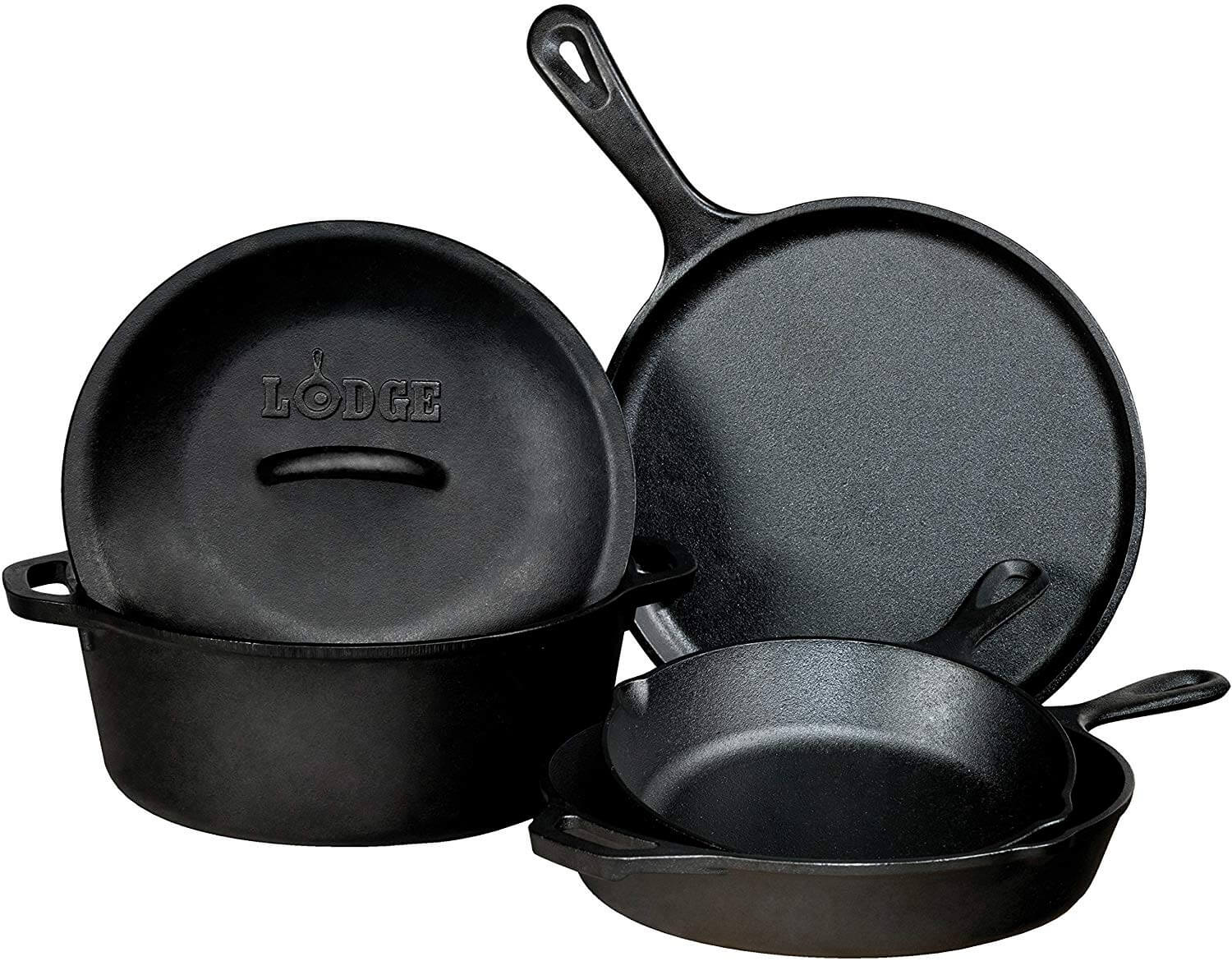
There are many positives when using a cast iron pan to cook any type of food in.
Cast iron conducts heat and does not retain any hot spots so it makes for more even cooking.
We do all of our cooking with a cast iron pan at home, even on our gas range.
Cast Iron cookware is also oven safe, making it very versatile.
Just a reminder to make sure you have a properly seasoned cast iron pan or pot to help rust from forming on your pan and to keep it non stick!
Wood Stove Cooking - Use A Trivet
One handy and useful kitchen tool you would want to have on hand is a trivet.
The word “trivet” is derived from the Latin word for tripod….which is why most have three legs.
However, since the tips of a three legged object would only scratch or gouge the top of your stove, most wood stove trivets are round or oval discs that sit flat on the top of your stove.
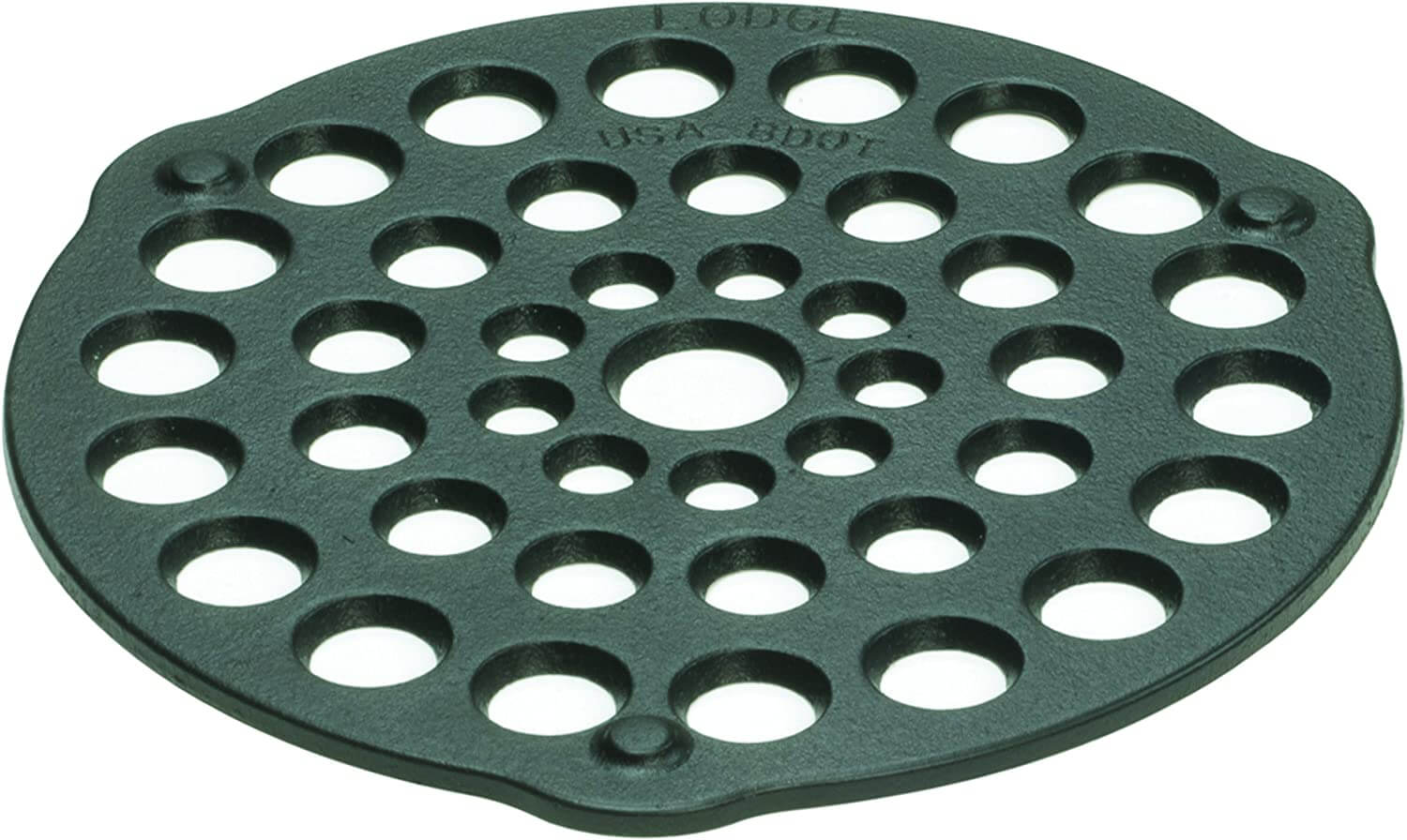
Look for a trivet that’s made out of cast iron.
As we stated before with the pans, cast iron holds its heat really well and it heats evenly making it the perfect choice for wood stove cooking.
Plus, you can even purchase one with a porcelain coating allowing you to match your wood stove if needed.
Learn How To Control Your Wood Stove Temperature
Wood stoves lack the knobs to control temperature like a gas range would have, so you’ll need to first be able to learn how to control how hot or cold your wood stove is operating at.
The easiest way to control the temperature is to use the air intake into the stove.
Operating the stove with more air will increase the temperature, while reducing the air will lower the temperature.
I like to “damper down” the stove about half way to achieve the optimal cooking range.
It’s kind of like the Goldilocks Tale where it’s not too hot…..but not too cold.
Also, the top of the stove will have “hot spots.”
You need to find out where the hottest spots are so you know where you can cook the fastest, or slowest, depending on the dish.
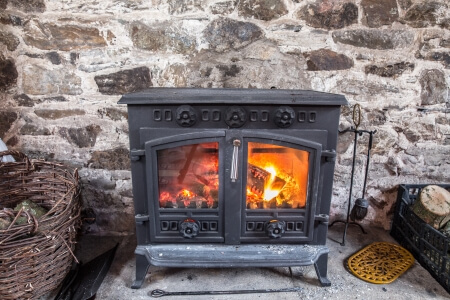
Being able to find the hottest spot on the stove will be key so you're able to do things like fry food and cooking won’t take forever.
Usually the middle of your wood stove is the hottest and the outer edges are cooler.
To find the temperature on the top of the stove you have a few options.
First, trial and error always works but you can also use technology to help you out.
I like to use an Infared Temperature Gun to digitally read the top surface of the wood stove.
The tool shoots a visible beam that allows you to take accurate temperature measurements across the entire surface of the stove.
Plus, the Infared Temperature Gun is relatively cheap (costing around $40) and they have a variety of other uses ranging from identifying heat loss around windows to working on your family car.
Cooking Over An Established Fire
Make sure you have an established fire before you start cooking.
Remember the heat on your wood stove top comes from the coals and not the flames.
Having a strong hot coal base is important before you start cooking, so keep that in mind that you won’t be able to just light a fire and start cooking right away.
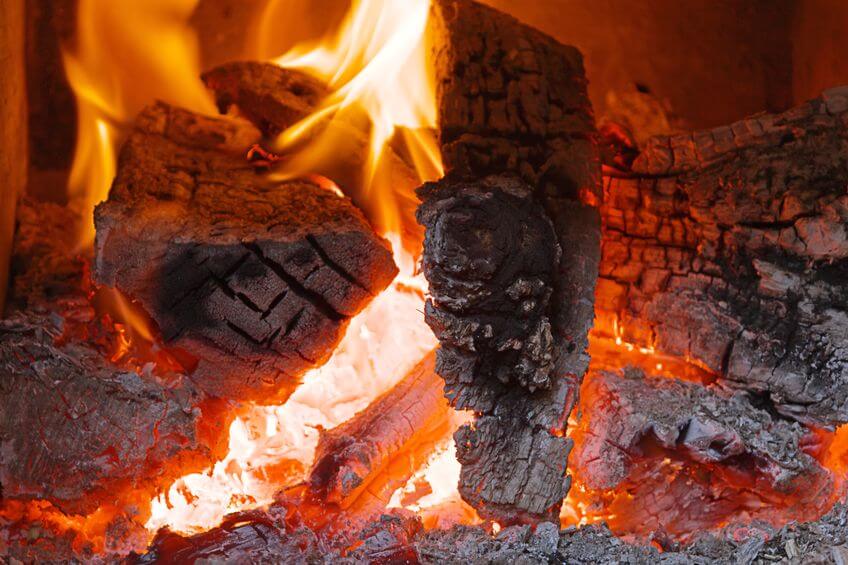
A wood burning stove takes time to heat up, whether you’re just trying to heat up the firebrick inside the stove, or if you have a soapstone wood stove that takes longer to heat up but retains the heat for a longer period of time.
Load your wood stove with the usual type of dry and seasoned wood that you use to heat your home, and establish a hot coal base.
This will get your stove letting off some good heat before you start cooking your food.
Wood Stove Cooking - Overall
Wood stove cooking takes longer to cook food compared to cooking on a traditional stove but the extra time is worth the end results.
The amount of time it takes to cook something over your wood stove is about equal to the time to cook something in a slow cooker.
However, because you’re keeping the fire burning continuously it will return heat into your home so you’ll stay comfortable in the process.
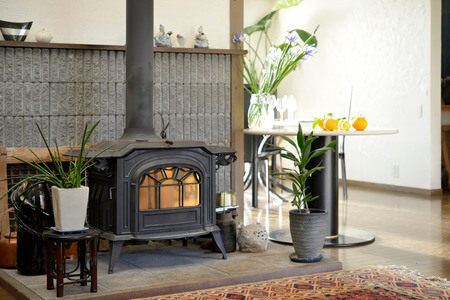
Remember to watch your food! If you see that your food is cooking too fast, move it to a cooler area and turn down the air intake.
If it seems like your food is cooking too slow and you want to speed things up, add more wood to your fire and allow more air into the firebox.
This will help to create more heat to speed the cooking process up.
Also, using a lid to cover your food will help to trap heat and cook food faster.
Wood stove cooking is fun!
It's a great way to enjoy family time around the fire while you try out new recipes on your wood stove.
Whether it's soup in the dutch oven or eggs on the cast iron pan, cooking over your wood stove is a sure way to change up your meals.

About the Author
Obsessed with firewood, Nick is behind over 350+ of Firewood For Life's articles, as well as countless reviews, guides and YouTube videos to help readers like you reduce heating costs and create the perfect fire.


